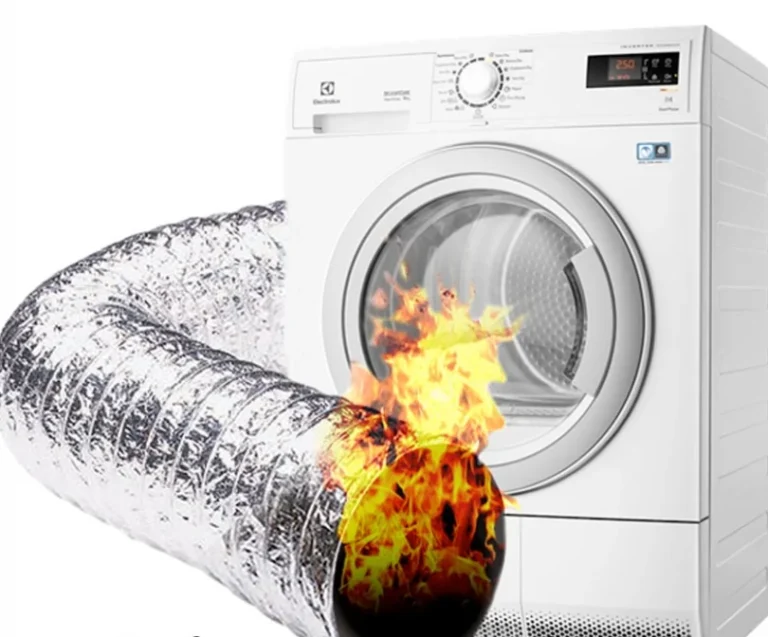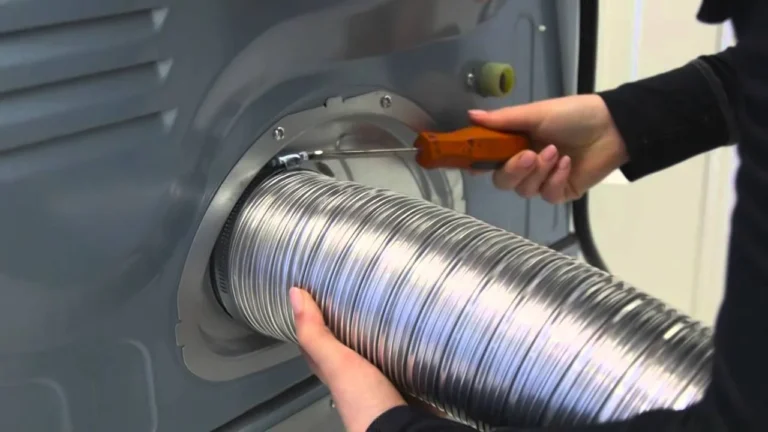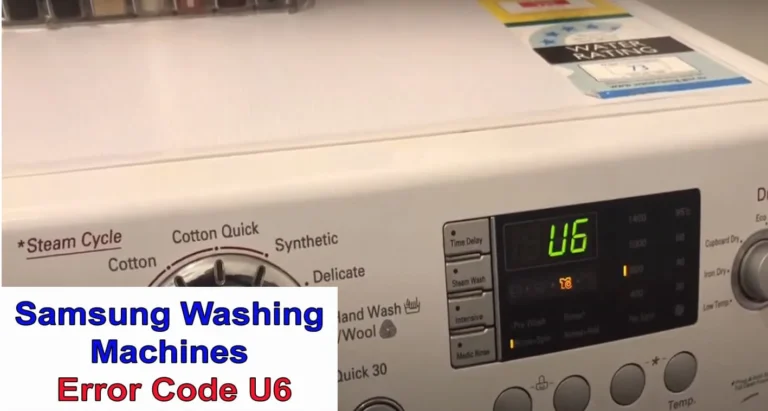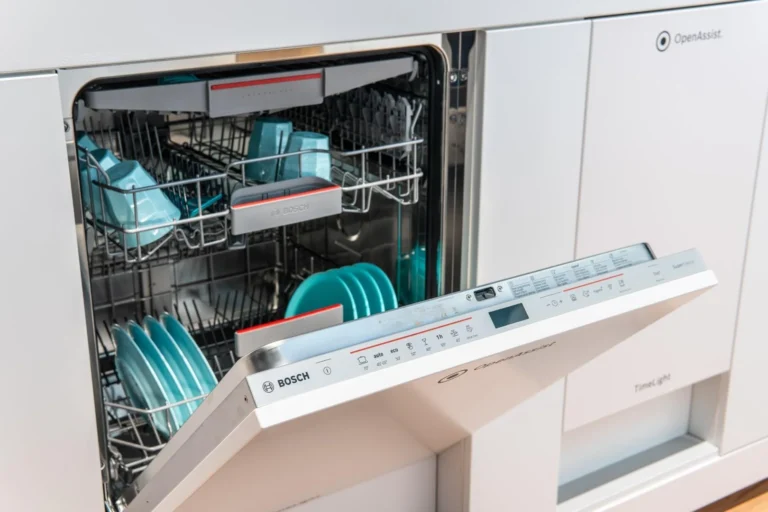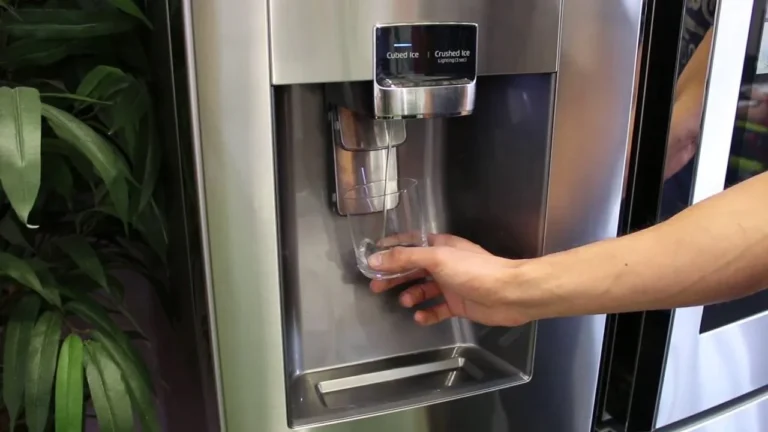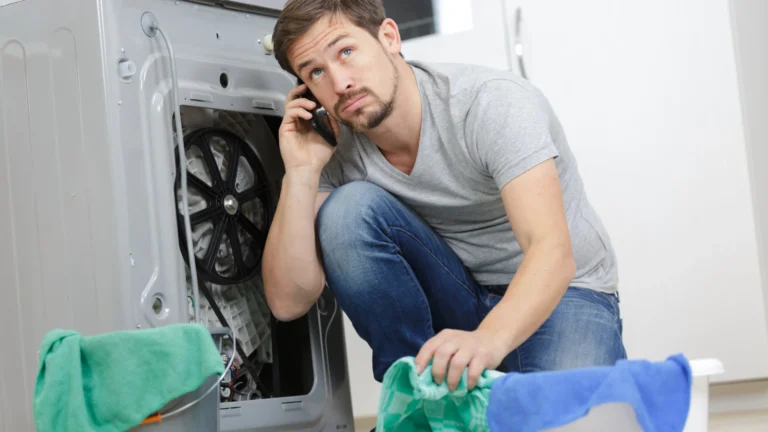Troubleshooting a Frigidaire Dishwasher That Won’t Start
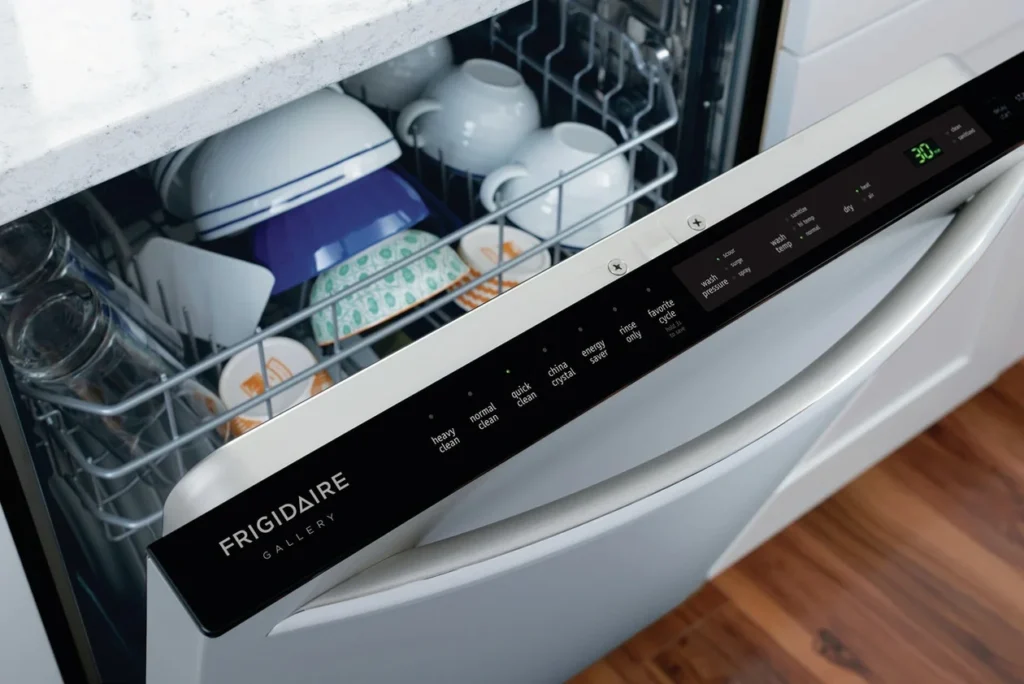
If you press the start button on your Frigidaire dishwasher but it won’t start running, there are several parts of the appliance you can check before calling a repair technician. Troubleshooting a few key components of the dishwasher is an easy process that can save you the cost and hassle of professional repairs. With some basic mechanical tests and electrical checks, you can often diagnose and fix the problem yourself.
Checking the Power Supply
The first step in diagnosing a Frigidaire dishwasher not starting is verifying that the appliance has power. There are a couple different things you can check related to the power supply:
Check the Power Cord
Make sure the dishwasher’s power cord is firmly plugged into the outlet. Unplug it and plug it back in to ensure a tight connection. Examine the entire power cord and plug for any damage or cuts that could interrupt power supply.
Test the Electrical Outlet
Test the outlet itself with a voltage tester or by plugging in another appliance like a lamp. If the outlet doesn’t have power, you’ll need to reset the circuit breaker or replace the fuse controlling that outlet.
Use an Extension Cord Properly
Avoid using an extension cord to reach the outlet unless completely necessary. Extension cords can cause voltage drops that prevent the dishwasher from getting adequate power. If you must use one, choose a heavy duty 14 gauge or larger cord, and keep it as short as possible.
Don’t Overload the Circuit
Dishwashers should be on their own dedicated circuit. Operating another high wattage appliance like a microwave on the same circuit can overload it and trip the breaker. Make sure the dishwasher circuit is not overloaded.
Once you’ve verified the power supply is good, the next place to check is the dishwasher’s control panel and internal wiring.
Checking the Control Panel
The control panel is the brain of the dishwasher that regulates the wash cycles. If it’s damaged or malfunctioning, that could prevent the dishwasher from starting.
Look for Physical Damage
Inspect the control panel for any visible damage like cracks, burns, or impact marks. Buttons that are pressed in, jammed, or broken can cause issues. Make sure none of the wires connecting to the control board are loose or detached.
Check for Error Codes
Many Frigidaire models have an LED display that shows error codes. Refer to the owner’s manual to interpret any error code that appears. This can quickly zero in on the failed part.
Test Buttons and Cycles
Try pressing the different wash cycle buttons like Heavy, Normal, Light, Rinse Only. Make sure you get a response on the display when you press them. Verify the Start/Reset button works. If the buttons don’t respond, the control board will need replacement.
Reset Control Panel
Unplug the dishwasher for a minute to reset the control board. Plug back in and try running a cycle. Sometimes resetting the controls will clear any glitches.
Malfunctions with the control panel can definitely prevent the dishwasher from starting. After testing that, check the door latch and detergent dispenser.
Checking the Door Latch
For safety the dishwasher won’t operate with the door open, so a faulty door latch can also lead to a machine not starting.
Inspect Latch Assembly
The door latch is a fork-shaped mechanism inside the door frame that clicks and grabs onto the tub when you close the door. Check for any broken or missing pieces on the latch. Examine the rubber boot covering the latch for damage.
Test Door Closure
Close the dishwasher door and listen for a solid “click” sound. That click indicates the latch grabbed the tub and door is properly closed. If you don’t hear that click, the latch needs adjustment or replacement.
Check Alignment
When properly aligned and adjusted, the latch should smoothly grab the lip of the tub each time you shut the door. Check that the latch hook is correctly overlapping and catching the tub.
Replace Components
If the latch feels loose and wobbly, the internal spring may be broken. If the latch is damaged or misaligned, replacement of the entire latch assembly will be required.
Catching a faulty door latch is important so the dishwasher can start running when you press Start. The detergent dispenser is another small but critical component to check.
Checking the Detergent Dispenser
The detergent dispenser has a release mechanism that needs to open for the dishwasher to run. Issues here can cause a failure to start.
Remove Debris
Check inside the detergent cup for any stuck chunks of detergent or other debris. Clogged openings in the dispenser can prevent it from opening to release the soap.
Ensure Detergent Used
The dishwasher will not start without detergent in the dispenser cup. Add fresh dishwasher detergent and make sure you do not use hand washing detergent.
Test Release Mechanism
The detergent cup should spring open when you first run a wash cycle. Check that the release door is not jammed. Press down on the door by hand to confirm it pops back open as expected.
Install New Dispenser
If cleaning doesn’t resolve any issues with the detergent dispenser, replacing it with a new one is an easy and inexpensive fix.
If the dishwasher still won’t start after checking previous items, investigate the door switch and control board next.
Testing the Door Switch
A small door switch turns on power to the control board and motor when the dishwasher door closes. If this switch malfunctions, the dishwasher may not start when you press Start.
Inspect Switch
The plastic door switch is located right inside the door latch on the frame. Check that the switch plunger extends out as it should and returns to position when released.
Confirm Switch Clicks
Listen for an audible click from the door switch as you open and close the door. No click indicates a bad switch that needs replacement.
Test Switch Continuity
Use a multimeter to test continuity through the door switch contacts. You should get continuity only when the door is closed and the switch is activated.
Replace Defective Switch
If inspection reveals physical damage, no audible click, or no continuity when closed, the door switch requires replacement. This is a relatively easy switch to swap out.
A properly working door switch sends voltage to the control board which then turns on the dishwasher. If the switch checks out, the control board may be the culprit.
Testing the Control Board
The control board is the main electronic control center that operates all the dishwasher components. An issue here can definitely lead to failure to start.
Check Control Panel Connection
Make sure the ribbon cable or wiring harness between the control panel and main board is securely attached and undamaged. Loose or corroded connections can cause communication issues.
Test Input Voltages
Use a multimeter to check if the control board is receiving power from the junction box when the dishwasher door is closed. Input voltage should be around 120V.
Confirm Control Signals
Check that motor commands and cycle relay signals are being sent from the control board to the dishwasher components by testing voltages at the connection points.
Reset Control Board
Unplug power to reset the control board, then plug back in and try running a cycle. Resetting it might clear any software glitches that are preventing operation.
Replace Control Board
If diagnosis indicates the control board has failed with permanent electrical faults or physical damage, replacement of the control board is required. Always power down the dishwasher before removing!
The control board and touchpad work together to operate the dishwasher, so troubleshoot both if the appliance won’t start. The heating element is another important part to check if encountering issues.
Checking the Heating Element
The heating element heats the water for washing and drying dishes. Burnt out or defective heating elements are a common reason dishwashers fail to start or fill with water.
Inspect Element Condition
Remove the bottom panel to visually inspect the heating element. Look for any discoloration or cracks in the metal indicating element failure. Also check for loose, damaged, or burnt wires.
Test Element Continuity
Disconnect power and use a multimeter to test continuity through the heating element. You should get a complete circuit. If there is no continuity, the element needs replacement.
Check Resistance
Use a multimeter to measure resistance through the heating element. Resistance should be within the range listed on the element. Too high or low resistance indicates a bad element.
Ensure Secure Connections
While down in the base, check that all wiring terminals leading to the heating element are securely fastened and free of corrosion.
If the heating element checks out fine, a couple other internal parts like the temperature sensor or float switch could be causing a no start condition.
Testing Dishwasher Sensors
Malfunctioning sensors that monitor internal tub conditions can lead to a dishwasher not starting or filling with water.
Temperature Sensor
The temperature sensor monitors water temp and sends signals to the control board. Damage here may prevent heating and starting. Test continuity through this sensor and replace if defective.
Float Switch
The float switch prevents overflow by shutting off water when reaching a set fill level. If defective, this switch will not allow proper water fill and startup. Inspect switch and tubing for obstructions.
Flow Meter
Some models have a flow meter to regulate water intake. Damage here can also lead to not filling and starting wash cycle. Check sensor disc spins freely and replace flow meter if faulty readings.
If all major dishwasher components check out fine but the appliance still won’t start, then the issue may be in the internal wiring.
Checking Internal Wiring
Several yards of low-voltage wiring route power and signals through the inner workings of the dishwasher. Damage here can definitely cause start up failure.
Inspect Wire Condition
Check that wiring does not have any cuts, abrasions, melted insulation or burnt spots which could cause continuity issues. Also look for corrosion at connection points.
Confirm Connections
Make sure wires are securely fastened to their terminals and connection points between components. A loose wire connection can prevent proper operation.
Test Continuity
Use a multimeter to test continuity between connection points and components to isolate any wiring breaks. Test between parts like the control board, heating element and motor.
Replace Damaged Wiring
Individual wires can sometimes be spliced and repaired if damage is minimal. But extensive damage will require a complete wire harness replacement.
Thoroughly checking the dishwasher’s internal wiring is the final step in a complete diagnostic of why a Frigidaire dishwasher won’t start. If you’ve methodically tested all dishwasher parts described in this guide but still cannot resolve the no start problem, then calling in a service technician is the next best step. Following this troubleshooting guide first provides the repairman with helpful information to quickly zoom in on the issue. Carrying out starter diagnostics and electrical tests will save you money on unnecessary technician time and get your Frigidaire dishwasher back to washing dishes quickly!
Troubleshooting a Frigidaire Dishwasher Not Starting
| Issue | Potential Cause | Solution |
| No power | – Loose connection – Tripped breaker – Faulty outlet | – Check connections – Reset breaker – Test outlet |
| Door latch issue | – Broken/missing latch – Alignment problem | – Inspect/replace latch – Adjust alignment |
| Control panel problem | – Buttons not responding – Error code showing | – Press buttons to test – Lookup error code |
| Clogged detergent dispenser | – Debris stuck inside | – Clean out debris/dirt |
| Faulty door switch | – Switch not clicking – No continuity | – Listen for click – Test continuity |
| Heating element issue | – Visible cracks/damage – No continuity | – Inspect element – Test continuity |
| Bad control board | – Loose connections – Not sending signals | – Check connections – Test signals |
| Sensor failure | – Temperature – Float switch – Flow meter | – Test/replace sensor |
| Damaged wiring | – Burnt spots – Loose connections | – Inspect wiring – Test continuity |
In conclusion, there are a number of different parts in a Frigidaire dishwasher that could cause a failure to start. Methodically testing each component and electrical circuit as outlined in this table can help isolate the issue so the correct part can be repaired or replaced to get the dishwasher running again. Let me know if you need any clarification on the troubleshooting tips!
Frequently Asked Questions
Q: Why does my Frigidaire dishwasher periodically not start?
A: Intermittent failure to start could be caused by a faulty door latch, door switch, or loose wiring connection. Testing these components would be the first steps.
Q: The dishwasher lights come on but it won’t start when I press Start. What should I check?
A: This indicates the control board is getting power but the start signal is not going through. Check the door latch alignment, test the door switch, and inspect the wiring connections.
Q: My dishwasher is making a humming sound but won’t fill or start. What is the problem?
A: This usually indicates a failed drain pump. A clogged impeller or burnt out pump motor can cause this. Replacing the drain pump will normally resolve this.
Q: The dishwasher won’t start but I can hear a clicking noise. What does this mean?
A: Typically a clicking noise signifies a problem with the door latch or door switch. Adjust the latch alignment and confirm the door switch is clicking properly.
Q: What should be checked if the dishwasher starts but doesn’t fill with water?
A: Issues with water inlet fill valve, float switch, or faulty flow meter could prevent proper water filling. Test each of these components.
Let me know if you need any other troubleshooting questions answered regarding a Frigidaire dishwasher not starting!

